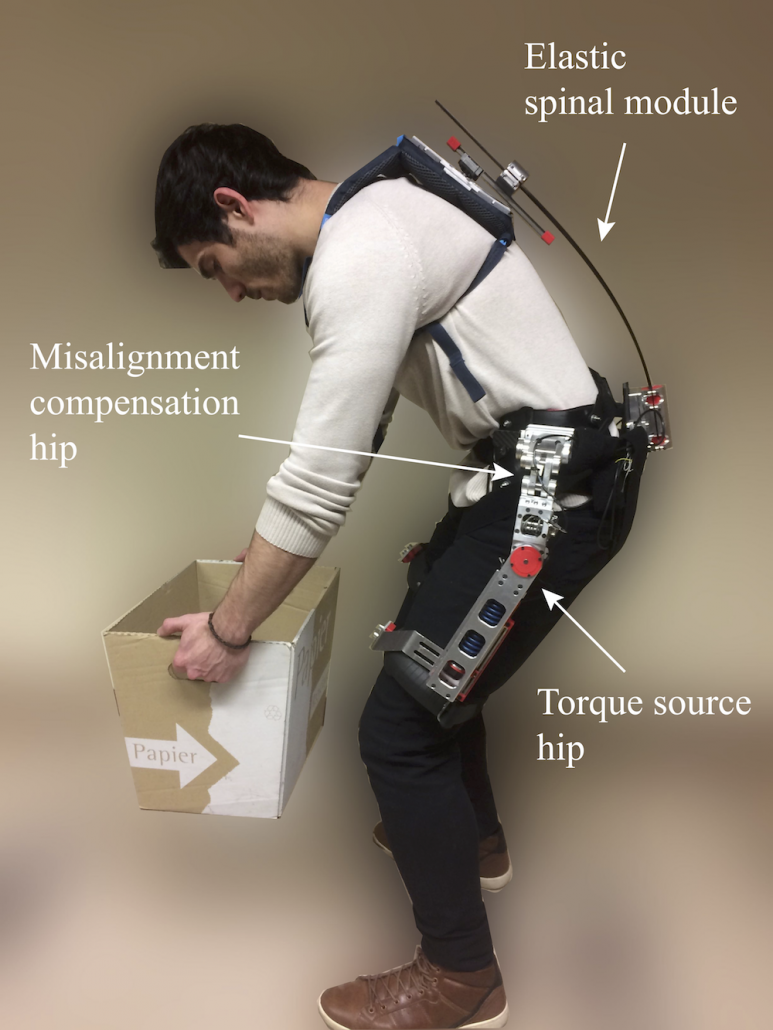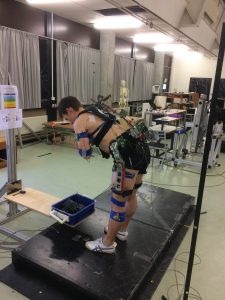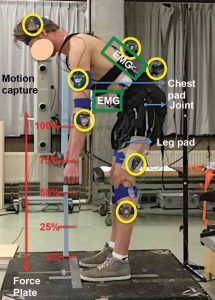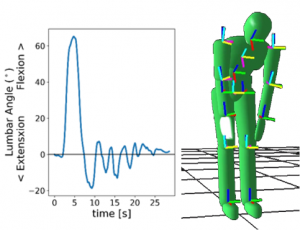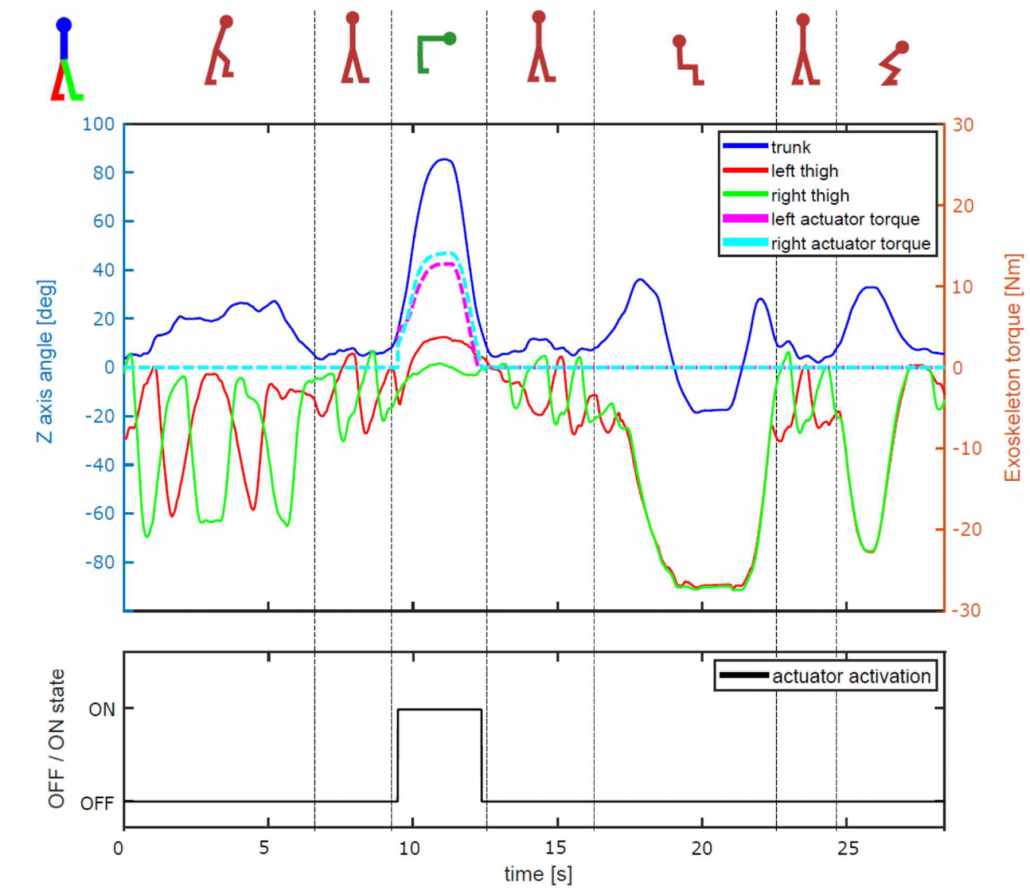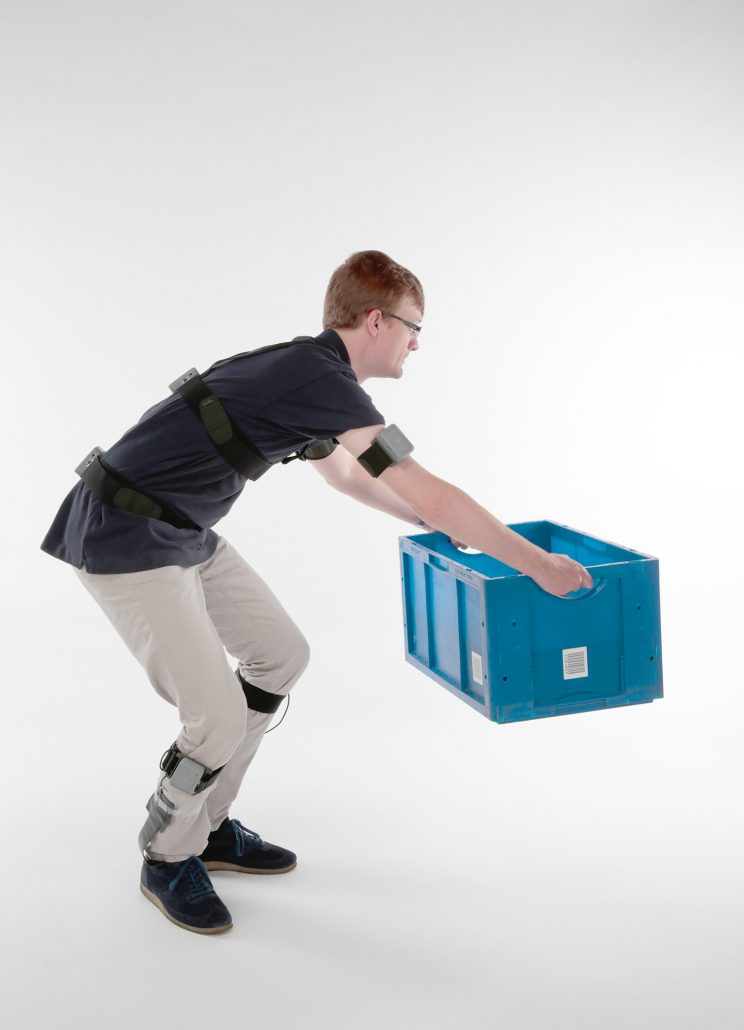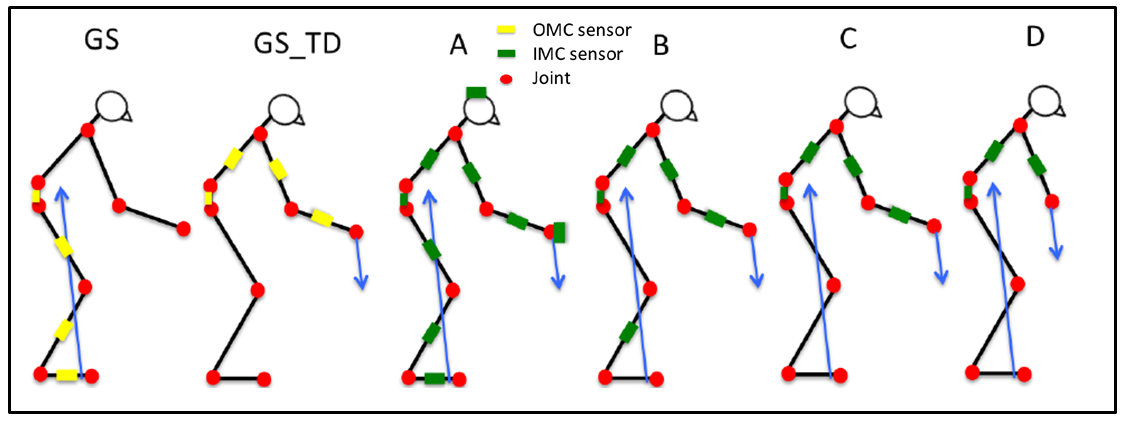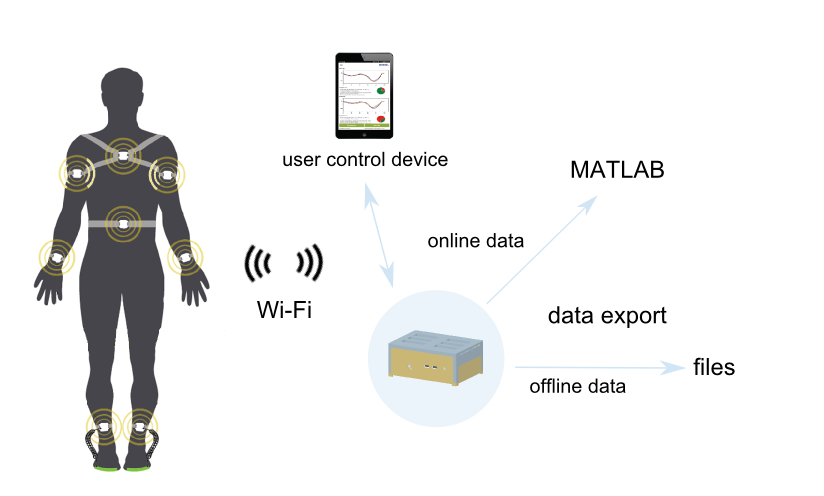Biomechanical requirements for active version of spinal exoskeleton
/in ResearchWe assessed full body kinematics and spine load components in natural lifting, to find kinematic and support pattern requirements for the SPEXOR actuated exoskeleton. Furthermore, using a benchmark actuated exoskeleton, we investigated how specific actuation control modes interact with subject behavior, and how this affects spine loading.
Biomechanical requirements for passive spinal exoskeleton are defined
/in ResearchWe assessed to what extent a benchmark exoskeleton reduces spine loading and changes body kinematics during static trunk bending and during lifting. Additionally, we investigated how it affects perceived comfort, effort, performance, and metabolic energy consumption during functional activities such as walking and stair climbing. Based on these data, biomechanical requirements for the spexor passive exoskeleton were refined.
Evaluation of the musculoskeletal stress monitoring system
/in ResearchWe evaluated our optimized stress monitoring system, consisting of pressure insoles and inertial sensors, by comparing its performance to a laboratory grade system in a mock-up of realistic working conditions. Sensor outcomes and resultant low back load measures were compared between systems. The system was found to meet standards in accordance with the previously defined requirements.
Design optimization of passive spinal exoskeleton
/in ResearchIn recent work UHEI led efforts towards the modeling of a passive spinal exoskeleton, and simulating the interaction between the human user and the exoskeleton (Millard et al. 2017, Manns et al. 2017, Harant et al. 2017). These results build upon earlier contributions of a dynamic whole body human model which is used as a basis for the exoskeleton design. We use a combined model of a human and a parametrized exoskeleton and setup optimal control problems to identify exoskeleton spring characteristics or motor torques for lifting motions. The motions simulated are either fitted to recorded data (collaboration with S2P and VUA), or generated as the solution of a minimization function. We also compute the forces and torques transmitted between the human and the exoskeleton. These are important first measures that will help support the exoskeleton and human-exoskeleton-interface design process.
Conceptual design of the monitoring system
/in ResearchIn December 2016 we formalized the conceptual design based on the specifications from the requirements workshop. Over the last months, OBG and VUA had an intensive exchange about the used biomechanical models to consider the latest scientific approaches for the monitoring system. We now started with the implementation of the monitoring system.


